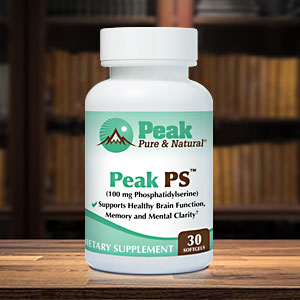Get Easy Health Digest™ in your inbox and don’t miss a thing when you subscribe today. Plus, get the free bonus report, Mother Nature’s Tips, Tricks and Remedies for Cholesterol, Blood Pressure & Blood Sugar as my way of saying welcome to the community!
New medication brings hope to migraine sufferers

Migraine headaches affect ten percent of the world’s population. That means that one in every ten people you meet — maybe even you — suffers from attacks of debilitating pain on one side of their head that are often accompanied by slurred speech, nausea, and vomiting, as well as sensitivity to light and sound.
Migraines are three times more common in women than in men. For this reason, migraine was long thought to be “more of a hysterical woman’s disease and not given the respect it really deserves,” according to Susan Broner, medical director of the headaches program at Weill Cornell Medicine/New York-Presbyterian Hospital.
Nancy Lipsitz, a patient of Dr. Broner’s and a migraine sufferer, has gotten her life back again, thanks to a newly approved drug that takes a completely different approach to migraine treatment.
We’ll tell you Nancy’s story shortly. But first, let’s talk about those new drugs, and how they’re different from prior approaches to migraine treatment.
Treating the cause, not just the symptoms
For decades, doctors have been treating migraines with medications meant for other conditions, such as blood pressure medication, anti-seizure drugs, and anti-depressants. These were meant to alleviate symptoms, rather than get at the cause of a migraine headache.
Until quite recently, migraine had been considered a blood vessel problem. Investigators now know that it is really a nerve signal problem. Aimovig, the newly approved drug that Nancy Lipsitz is taking, blocks calcitonin gene-related peptide, or CGRP, the chemical involved in transmitting pain signals in migraine headaches.
Swedish researcher Lars Edvinsson discovered CGRP. He took blood samples from patients during a migraine attack and found that CGRP was the only neurotransmitter (a chemical that carries nerve signals) that was released during the actual attack.
This discovery led to the development of medications that sought to control those pain signals, not just treat the headache symptoms.
In the case of Aimovig, the drug that’s helped Nancy Lipsitz, it blocks the CGRP receptor, rather than targeting CGRP directly.
David Dodick, a neurologist and headache specialist at the Mayo Clinic in Arizona, compares the drug’s action to putting gum in a lock. “You can’t get the key in anymore. You can’t open the lock,” he says.
Getting her life back
Nancy Lipsitz started monthly injections of Aimovig back in July.
“I see it as being my savior, my hope,” she said. The treatment hasn’t eliminated all her pain, but she now has more days of feeling good in three weeks than she used to have in three years.
She describes her migraines as like “someone taking a pick and jabbing it through my nose and eye.”
Previously, Nancy was on blood pressure and anticonvulsant medications, which brought some relief but became less effective over time. She also was given nonsteroidal anti-inflammatory drugs (NSAIDs) which left her with a bleeding ulcer and kidney damage.
Dr. Broner says there is still reason to be cautious. CGRP is involved in other bodily functions involving the heart and skin, and large, long-range studies on possible side-effects of the new medication have yet to be done.
Still, people like Tina Ansari are hopeful.
After two months on Aimovig, Tina has had just one migraine and her daily headaches are less painful, “down from a 7 to a 4.”
“I can drive my kids. I’m living my life. It’s been a game changer.”
Natural migraine treatments
If Aimovig turns out to be the migraine miracle most sufferers hope for, that would be a tremendous relief. The drug has received FDA approval and completed at least three successful clinical trials.
However, few drugs are without their setbacks — usually in the form of side effects.
During the clinical trials, 1 in 10 participants reported:
- Constipation
- Antibody development
- Injection site reaction (including injection site redness, pain, and itching)
- Muscle cramps, muscle spasm
So, with that being said, it’s important to remember there are natural options for taking medications. And depending on the severity and frequency of your migraine experiences, you just might find something that will at least turn the pain dial down.
Check out these seven tips for fewer migraines from my colleague, Dr. Adria Schmedthorst. Dr. Mark Wiley also suggests migraine relief with the right foods and supplements.
Sources:
- New drugs, decades in the making, are providing relief for migraines — Washington Post
- Migraine Information Page — Migraine Information Page
- What Is Aimovig (Erenumab)? — Everyday Health













